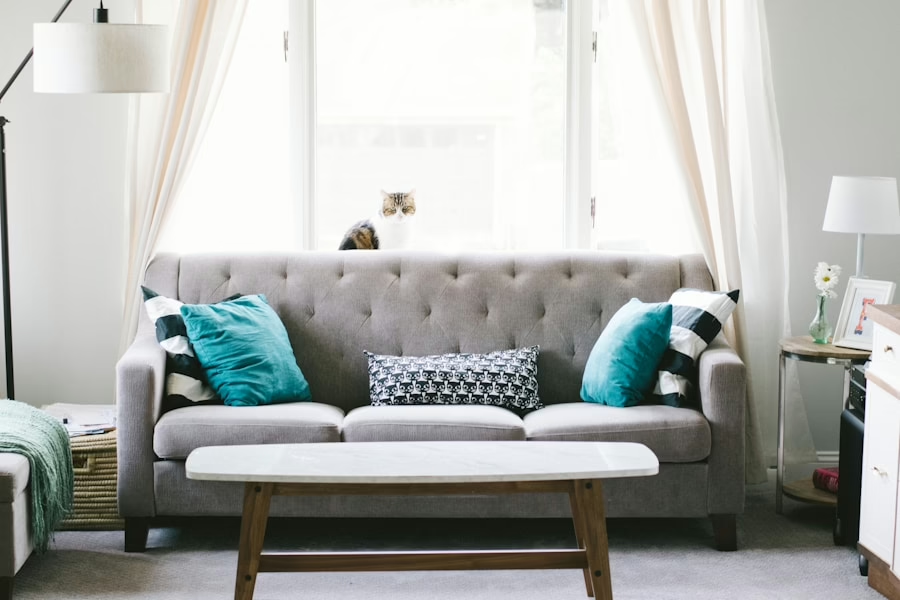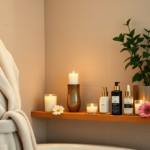Minimalist living is a lifestyle choice that emphasizes simplicity and intentionality in various aspects of life. At its core, minimalism encourages individuals to focus on what truly matters by reducing excess and eliminating distractions. This philosophy can manifest in various forms, from decluttering physical spaces to simplifying daily routines and even re-evaluating personal relationships.
The essence of minimalist living is not merely about owning fewer possessions; it is about cultivating a mindset that prioritizes quality over quantity and fosters a deeper appreciation for the present moment. The roots of minimalism can be traced back to various cultural and philosophical movements, including Zen Buddhism and the Stoic philosophy, both of which advocate for simplicity and mindfulness. In contemporary society, minimalism has gained traction as a response to consumerism and the overwhelming nature of modern life.
By adopting a minimalist approach, individuals can create a more meaningful existence, free from the burdens of materialism and the chaos of clutter. This shift in perspective allows for greater clarity, focus, and ultimately, a more fulfilling life.
Key Takeaways
- Minimalist living is about streamlining your essentials and focusing on what truly adds value to your life.
- Embracing minimalist fashion involves building a capsule wardrobe with versatile, high-quality pieces.
- Decluttering your space is essential for creating a tranquil and functional home environment.
- Mindful consumption is about making conscious choices in a consumer-driven world to reduce waste and live more sustainably.
- Overcoming challenges in embracing a minimalist lifestyle requires practical strategies and a shift in mindset.
The Benefits of Minimalist Living: How It Can Improve Your Life
Embracing a minimalist lifestyle can lead to numerous benefits that extend beyond mere aesthetics. One of the most significant advantages is the reduction of stress and anxiety. A cluttered environment often contributes to feelings of overwhelm, making it difficult to concentrate or relax.
By simplifying one’s surroundings, individuals can create a serene atmosphere that promotes mental clarity and emotional well-being. Studies have shown that individuals who live in organized spaces report higher levels of happiness and lower levels of stress. Additionally, minimalist living encourages financial freedom.
By prioritizing essential items and resisting the urge to accumulate unnecessary possessions, individuals can save money and allocate resources toward experiences that enrich their lives. This shift in focus from material goods to meaningful experiences fosters a sense of fulfillment that often eludes those caught in the cycle of consumerism. Furthermore, minimalism can lead to improved time management, as individuals learn to prioritize their commitments and focus on activities that align with their values.
Decluttering Your Space: Tips for Streamlining Your Essentials
Decluttering is a fundamental step in adopting a minimalist lifestyle. To begin this process, it is essential to approach each area of your home with intention. Start by tackling one room or space at a time, which prevents feelings of overwhelm and allows for a more manageable experience.
As you sort through your belongings, ask yourself critical questions: Do I use this item regularly? Does it bring me joy? If the answer is no, consider letting it go.
This method not only helps in identifying what is truly essential but also fosters a sense of liberation as you release items that no longer serve you. Another effective strategy is the “one in, one out” rule, which encourages mindful consumption. For every new item you bring into your home, commit to removing an existing one.
This practice helps maintain balance and prevents the accumulation of unnecessary possessions over time. Additionally, consider implementing storage solutions that promote organization, such as baskets or bins that can neatly contain items while keeping them accessible. By creating designated spaces for your essentials, you can streamline your environment and cultivate a sense of order.
For more tips on minimalist living, visit The Berkey.
Embracing Minimalist Fashion: How to Build a Capsule Wardrobe
| Category | Metrics |
|---|---|
| Number of Clothing Items | 30-40 pieces |
| Color Palette | Neutral colors (black, white, gray, navy) with a few accent colors |
| Quality over Quantity | Investing in high-quality, versatile pieces |
| Outfit Combinations | 100+ outfits from a capsule wardrobe |
| Environmental Impact | Reduced clothing waste and carbon footprint |
Minimalist fashion revolves around the concept of a capsule wardrobe—a curated collection of versatile clothing pieces that can be mixed and matched to create various outfits. Building a capsule wardrobe begins with assessing your personal style and identifying key pieces that reflect your aesthetic while also being functional. Focus on quality over quantity by investing in timeless garments made from durable materials that withstand the test of time.
When selecting items for your capsule wardrobe, consider choosing a cohesive color palette that allows for easy coordination. This approach not only simplifies daily outfit choices but also reduces decision fatigue, allowing you to start each day with clarity and confidence. Additionally, embrace the idea of versatility; opt for pieces that can transition seamlessly from casual to formal settings.
By adopting minimalist fashion principles, you can cultivate a stylish yet practical wardrobe that aligns with your values and lifestyle.
Minimalist Home Decor: Creating a Tranquil and Functional Space
Minimalist home decor emphasizes simplicity, functionality, and tranquility. To create a serene living environment, begin by selecting furniture and decor items that serve a purpose while also contributing to the overall aesthetic. Choose pieces with clean lines and neutral colors that promote a sense of calmness.
Avoid overcrowding spaces with excessive decorations; instead, opt for a few carefully chosen items that resonate with you personally. Incorporating natural elements into your decor can further enhance the minimalist ambiance. Consider adding plants or natural materials like wood and stone to create warmth and connection with nature.
Additionally, prioritize open spaces and natural light by arranging furniture in a way that promotes flow and accessibility. A minimalist home should feel inviting and peaceful, allowing you to unwind and recharge amidst the demands of daily life.
Mindful Consumption: Making Conscious Choices in a Consumer-driven World
Evaluating Purchases
Before making a purchase, it’s essential to take time to evaluate whether the item aligns with our values and needs. We should ask ourselves if it will enhance our life or simply add to the clutter.
Supporting Sustainable Brands
By choosing to support sustainable brands that prioritize ethical production practices and environmental responsibility, we can contribute to a more sustainable future. Investing in quality over quantity and purchasing items that are built to last can significantly reduce waste.
Mindful Consumption Beyond Material Goods
Mindful consumption extends beyond material goods; it also encompasses how we spend our time and energy. By being conscious of our commitments and relationships, we can cultivate a life that reflects our true priorities.
Overcoming Challenges: Practical Strategies for Embracing a Minimalist Lifestyle
Transitioning to a minimalist lifestyle can present challenges, particularly in a society that often equates success with material wealth. One common hurdle is the emotional attachment we develop toward our belongings. To overcome this challenge, practice gratitude for the items you choose to keep while recognizing that letting go does not diminish their value or significance in your life.
Consider documenting memories associated with certain items through photographs or journaling as a way to honor their place in your past without holding onto them physically. Another challenge may arise from societal pressures or expectations regarding consumer behavior. To combat this, surround yourself with like-minded individuals who support your minimalist journey.
Engage in communities—both online and offline—that share similar values and encourage one another in making conscious choices. Additionally, set realistic goals for yourself; embrace the idea that minimalism is not an all-or-nothing approach but rather a continuous journey toward simplicity and intentional living. By implementing these strategies, you can navigate challenges with resilience and commitment to your minimalist aspirations.




